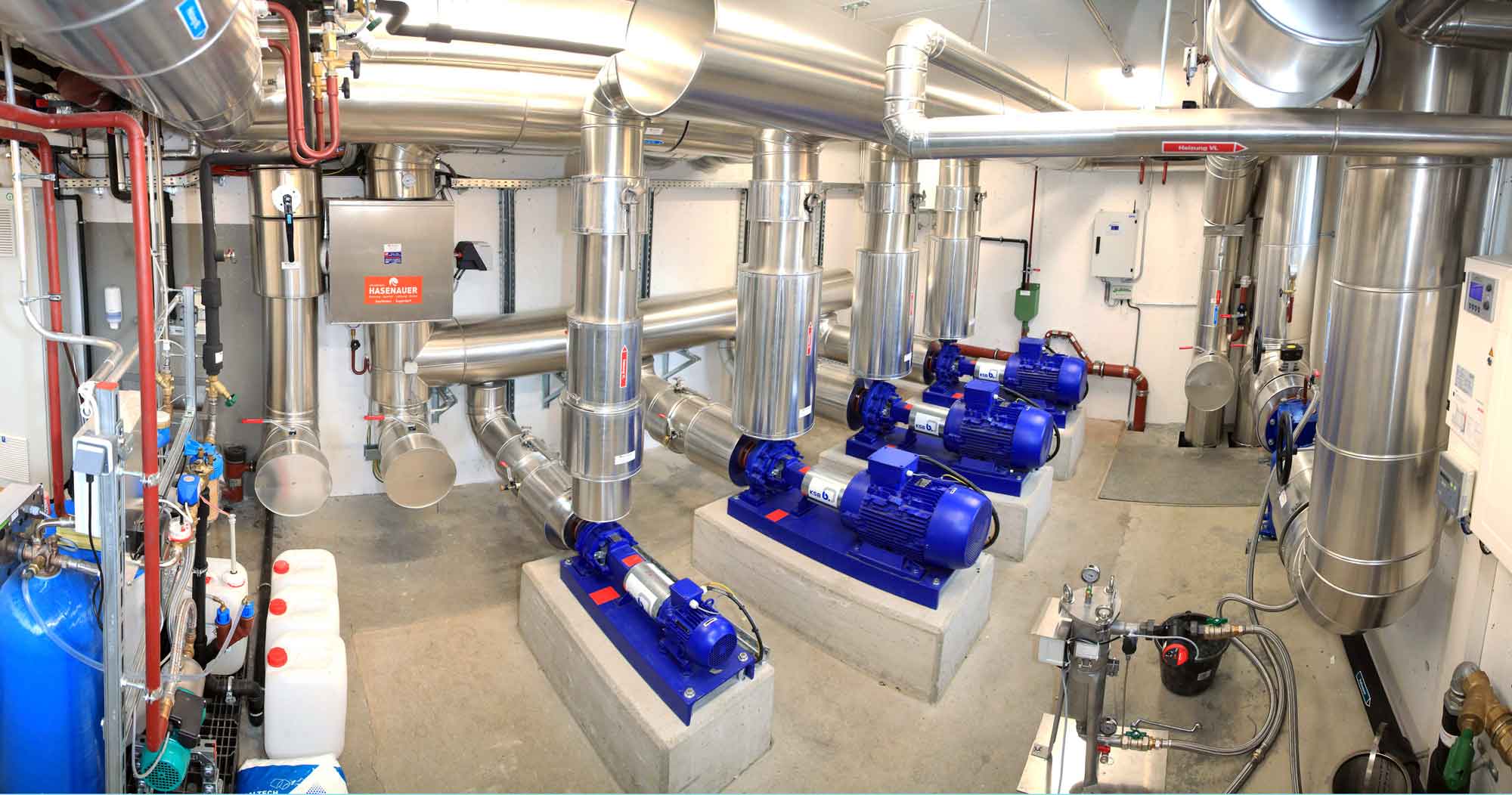Biomass-based district heating networks are an important part of a sustainable heat supply. Around 2,400 biomass heating plants are currently operating in Austria1. However, many heating networks of the first and second generation now require upgrading or modernisation in order to comply with future technical, economic and regulatory requirements. A 2-stage modernisation process was developed within the framework of Thema-FLEX for the Saalfelden biomass heating network operated by Salzburg AG. The 5.3 km long district heating network supplied roughly 50 consumers in the year 2019 (prior to modernisation), and the annual heat production was around 13.1 GWh. The heat is primarily generated by a biomass boiler with a rated output of 2.5 MW plus an economiser (0.3 MW). For peak loads and as a reserve in case of outages, the system includes a gas boiler (5 MW), a power-to-heat system and another remote gas boiler system at the local primary school.
Technical refurbishment
The goal of the project was to increase the share of renewable energy sources used in the heating network, while also improving the efficiency of the existing systems. This was accomplished by implementing various technical optimisations at the heating plant. These included modifications of the biomass boiler system and hydraulics, installing flue gas recovery systems, implementing a flue gas cleaning system (e-filter) as well as increasing the output of the flue gas condensation (from 300 kW to 550 kW), replacing the control systems and implementing a thermal storage system with a volume of 150 m³.
The modernisation led to an increase in the energy efficiency of the biomass boiler system and a significant reduction of fossil fuels in the energy mix. The share of fossil gas was reduced from an annual average of 11.3 % in 2019 to 3.7 % in 2021. This means a substitution of roughly 920 MWh of gas and CO2 savings of around 230 tonnes. At the same time, the heat production was increased by more than 1.8 GWh.
Integration of new heat sources
The potential for integrating alternative heat sources and making use of waste heat from low-temperature sources was also investigated, and a technical concept was developed for the integration of a heat pump. Alongside the dimensioning of the heat pump, the hydraulic integration also plays an important role. Two different variants were evaluated: integration of the heat pump into the thermal storage as well as integration into the biomass boiler return line. The second variant was recommended for the detailed planning. The simulations and calculations show that the integration of the heat pump results in a further increase in output and efficiency. The additional output capacity for the network expansion lies in the range of 1.5 – 2 MW, and a further reduction of fossil energy for covering peak loads would be possible. The concept is currently being validated in detail.
Overall, the optimisation concepts for the biomass heating plant have high multiplication potential and can be transferred to many district heating systems in Austria and Europe.
thermaflex.greenenergylab.at/e4a_demonstrator/retrofit-and-heat-pump-integration-saalfelden/?lang=en
1 Basisdaten Bioenergie 2021, Österreichischer Biomasseverband, Wien 2021
